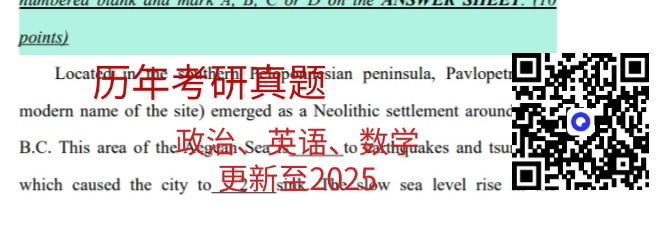西南大学电子信息工程学院研究生导师:何兴
西南大学电子信息工程学院研究生导师何兴介绍如下:
何兴,男,汉族,中共党员,四川巴中人,西南大学电子信息工程学院副教授,硕士生导师。研究领域包括:神经网络,智能电网,分岔理论,神经动力学优化理论,非线性动力系统等。目前主持国家自然科学基金2项和重庆市科委项目1项。
近年来,以第一作者或通讯作者身份发表或录用SCI论文20余篇,其中包括IEEE Trans. Control Syst. Technol., IEEE Trans. Neural Netw. Learn. Syst., IEEE Trans. Cybernetics, IEEE Trans. Syst.,Man Cybern.: Syst.,Neural Networks,Journal of the Franklin Institute, Nonlinear Analysis:RWA, Science China,中国科学 等国内外著名期刊, 并且担任多个国际期刊和学术会议的审稿人, 如IEEE TNNLS,IEEE TSMC-A,IEEE TCYB, IEEE TII, IEEE TSG, WCCI2014,ICONIP 2012,ISNN2013等。
联系邮箱:
hexingdoc@swu.edu.cn, hexingdoc@hotmail.com.
学习和工作经历
2014.01-现在 西南大学 电子信息工程学院 副教授,硕士生导师
2016.8-2018.8 中科院自动化研究所 博士后
2015.12-2016.02 香港城市大学 访问学者
2009.9-2013.12 重庆大学 计算机学院 工学博士
2012.11-2013.10 Texas A&M University at Qatar (Research Assistant)
2005.9-2009.7 贵州大学 理学院 理学学士
获奖情况:
2017重庆市自然科学一等奖(排名第5),2018.1.15
西南大学 优秀研究生班主任 2018.01
重庆市优秀博士论文 2016.9
重庆大学优秀博士论文 2015.9
科研项目主持:
1. 国家自然科学基金面上项目:基于神经动力学算法的多微网互联模式下的需求响应策略, 2018.01-2021.12.
2. 国家自然科学青年基金:具有时滞项的离散惯性神经网络的余维2分岔,2015/01-2017/12.
3. 重庆市基础与前沿研究计划一般项目:时滞离散Hopfied神经网络的余维2分岔,2014/07-2017/06.
指导研究生创新项目
1. 符早 中央高校基本科研业务费一般项目学生项目:分布式神经网络算法研究及其在智能电网中的应用 2016.05-2016.12.
2. 赵友 中央高校基本科研业务费一般项目学生项目:基于ADMM算法的智能电网中动态经济分配问题的研究 2017.05-2017.12
指导本科生获奖
1. 葛灵普等,全国大学生数学建模重庆赛区二等奖, 2015年
2. 孙淼等, 美国大学生数学建模三等奖, 2017年
3. 汪天才, 西南大学本科优秀毕业论文二等奖, 2017年
主要论文
1. 第一作者论文
[1]Xing He, Junzhi Yu, Tingwen Huang, Chaojie Li, Distributed Power Management for Dynamic Economic Dispatch in the Multi-micro-grids Environment, IEEE Transactions on Control Systems Technology, 2018, DOI: 10.1109/TCST.2018.2816902.
[2] Xing He,Daniel W.C. Ho, Tingwen Huang, Junzhi Yu, Haitham Abu-Rub and Chaojie Li, Second-Order Continuous-Time Algorithms for Economic Power Dispatch in Smart Grids, IEEE Transactions on Systems, Man, and Cybernetics: Systems, 2017. DOI: 10.1109/TSMC.2017.2672205.
[3] Xing He, Tingwen Huang, Junzhi Yu, Chuandong Li and Chaojie Li, An Inertial Projection Neural Network for Solving Variational Inequalities, IEEE Transactions on Cybernetics, 47(3),809-814,2017.
[4] Xing He, Chuandong Li, Tingwen Huang, Chaojie Li, and Junjian Huang, A Recurrent Neural Network for Solving Bilevel Linear Programming Problem. IEEE Transactions on Neural Networks and Learning Systems, 25(4), 824-830, 2014.
[5] Xing He, Chuandong Li, Tingwen Huang, Chaojie Li,Bogdanov-Takens Singularity in Tri-Neuron Network With Time Delay,IEEE Transactions on Neural Networks and Learning Systems, 24(6), 1001-1007, 2013.
[6] Xing He, Tingwen Huang, et al. A Continuous-Time Algorithm for Distributed Optimization Based on Multiagent Networks, IEEE Transactions on Systems, Man, and Cybernetics: Systems, 2017, DOI:10.1109/TSMC.2017.2780194.
[7] Xing He, Junzhi Yu, Tingwen Huang, Chuandong Li, and Chaojie Li, Neural networks for solving Nash Equilibrium problem in application of multiuser power control, Neural Networks 57(9), 73-78, 2014.
[8] Xing He , Chuandong Li*, Tingwen Huang and Chaojie Li, Codimension two bifurcation in a delayed neural network with unidirectional coupling. Nonlinear analysis: Real World Application 14(2), 1191-1202, 2013.
[9] Xing He*, Chuandong Li, Tingwen Huang and Junzhi Yu, Bifurcation behaviors of an Euler discretized inertial delayed neuron model, Science China Technological Sciences, 59 (3):418~427, 2016.
[10] Xing He*, Chuandong Li, Tingwen Huang, Junjian Huang, Zero-Hopf singularity in bidirectional ring network model with delay. Nonlinear Dynamics, 78: 2605-2616, 2014.
2. 通讯作者论文
[1] Chaojie Li, Xinghuo Yu, Tingwen Huang, Guo Chen and Xing He*, A Generalized Hopfield Network for Nonsmooth Constrained Convex Optimization: Lie Derivative Approach, IEEE Transactions on Neural Networks and Learning Systems, 27(2), 308-321, 2016.
[2] You Zhao, Xing He*, Tingwen Huang, et al. Smoothing inertial projection neural network for minimization Lp− q in sparse signal reconstruction, Neural Networks, 99, 31-41, 2018.
[3] Zao Fu, Xing He*, Tingwen Huang and Haitham Abu-Rub, A distributed continuous time algorithm for maximize social welfare in micro grid, Journal of the Franklin Institute, 353(15), 3966-3984,2016.
[4] 符早,何兴*,李传东,黄廷文,分布式一致性算法在微网社会福利问题中的应用. 中国科学: 信息科学, 2016, DOI:10.1360/N112016-00112.
[5] Ting Deng, Xing He*, Zhigang Zeng, Recurrent neural network for combined economic and emission dispatch,Applied Intelligence,https://doi.org/10.1007/s10489-017-1072-3,2017.
[6] Tiancai Wang, Xing He*, Tingwen Huang, Chuandong Li, Wei Zhang,Collective neurodynamic optimization for economic emission dispatch problem considering valve point effect in microgrid,Neural Networks, 93, 126-136, 2017
[7] Yao Yao, Xing He*, Tingwen Huang, Chaojie Li, and Dawen Xia, A projection neural network for optimal demand response in smart grid environment, Neural Computing Applications, 2016, DOI:10.1007/s00521-016-2532-0.
[8] Miao Sun, Xing He*, Tiancai Wang, Jie Tan, Dawen Xia, Circuit implementation of digitally programmable transconductance amplifier in analog simulation of reaction-diffusion neural model, Neurocomputing, 227, 74-81, 2017.
新闻来源: https://www.chinakaoyan.com/info/article/id/232527.shtml
声明:如本网转载稿涉及版权等问题,请作者致信kaoyan1365@126.com,我们将及时处理。



